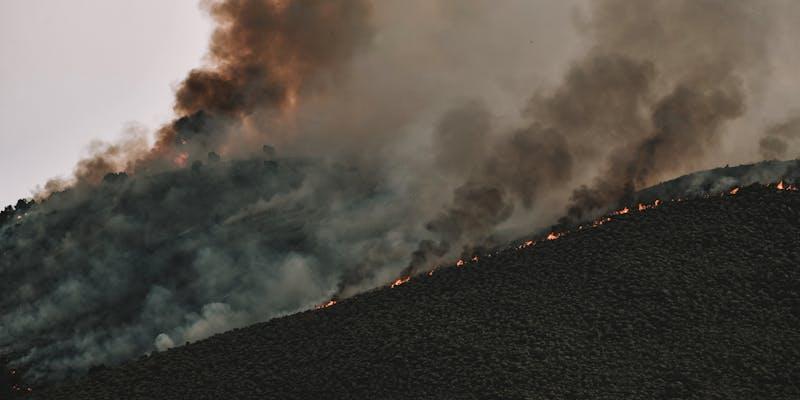The insurance industry uses the Catastrophe Loss Index to estimate the potential volume of insurance claims after a significant natural catastrophic loss. This index assigns a figure covering the anticipated insured losses from business, auto, and home property insurance policies.
The CLI's objective is to provide insurance insights that advise insurance issuers on how much money they should set up in reserve to deal with a spike in insurance claims during significant calamities. During a disaster investigation, it is also used to pinpoint the precise times and places to send insurance adjusters to confirm claims.
Catastrophic losses, meaning derivatives and bonds, are also based on CLI, enabling firms to hedge their bets against natural catastrophes. This includes avoiding enacting too many laws in a region that often experiences weather-related disasters. That is why it is better to have catastrophe losses insurance. Now, let us learn more about it.
Real-World Examples Of CLI

The Community Level Index (CLI) incorporates natural disaster frequency, severity, and susceptibility data. It can be used to ascertain the efficacy of crisis management initiatives and the probability and consequences of diverse disasters.
Unfortunately, the 2010 earthquake in Haiti killed more than 200,000, hurt more than 300,000, and forced 1.5 million people to leave their homes. Besides being very high compared to the global average, this event's projected CLI was 0.82.
Furthermore, the CLI shows that the tragedy had a much bigger effect on low-income cities with lots of people and bad buildings. This tragedy only made the problems of corruption, government turmoil, poverty, and injustice stand out more. Similarly, the importance of rebuilding and helping people in need in a highly unstable and difficult environment was emphasized. This example must have now surely cleared the catastrophic losses meaning.
Factors Influencing CLI

Disaster loss indices (CLIs) show how much money an area or country loses because of natural and artificial disasters. To count it, split the total amount of covered damages by the area's gross domestic product (GDP) to get the CLI. If the CLI is high, the disaster will have a disaster effect. Using the CLI, you can look at past patterns and trends in disaster losses and compare how bad different events were.
Numerous variables, including catastrophic loss frequency, severity, and location; exposure and vulnerability of assets and people; insurance penetration and coverage; and resilience and recovery capability of the afflicted region, all impact the cumulative loss index (CLI).
Intensity And Impact Of Disasters
The frequency and intensity of disasters are determined by artificial and naturally occurring threats, such as hurricanes, floods, earthquakes, wildfires, and terrorist acts. Serious and frequent disasters are correlated with higher CLI values; thus, catastrophe losses insurance is necessary.
After Japan was hit by a devastating earthquake and tsunami in 2011, which resulted in over $200 billion in insured losses, the country experienced its highest CLI ever, 4.4%the US hurricane season of 2019 had a CLI of 0.1% and only $20 billion in insured damages, which was relatively mild compared to previous years.
Population And Assets Exposure
The impacted area's density and size of population, level of urbanization and development, income and wealth distribution, standard and compliance of buildings and infrastructure, accessibility and availability of public services and resources, etc., are some of the demographic, economic, and social factors that determine how exposed and vulnerable the population and assets are. A higher CLI indicates increased susceptibility and exposure of the individuals and assets.
As an illustration, the catastrophic 2010 Haitian earthquake caused insured losses of more than $8 billion. This event also produced the maximum CLI of 120% for a single occurrence. Haiti was unable to prevent disasters because of its large and impoverished population, lack of development, corrupt and incompetent government, and lack of catastrophic loss planning and response capabilities.
Insurance Coverage
Catastrophe losses insurance coverage and usage are affected by many things, such as the local insurance market and policies, supply and demand, rates and fees, government oversight and control, new insurance goods and services, insurance education and knowledge, and more. Lower CLI is linked to more people having insurance and more people having it.
This ensures that people and their things affected by the disaster will have more financial safety and less financial stress because of insurance. In 2017, Mexico had a big earthquake that caused $2 billion in insurance damage and a 0.2% CLI.
There was a structured and funded insurance program for low-income families and a competitive and smart insurance market for higher-income households in Mexico. This meant that many people had insurance, especially for earthquake risk.
Affected Area Recovery Capacity
After knowing the catastrophic losses meaning, the resilience and recovery capacity of a disaster-affected area is determined by the factors that assist it in managing, adapting to, and recovering from the disasterdisaster risk management and governance, preparedness and response, relief and reconstruction, mitigation and prevention, learning and innovation from the catastrophe, etc.
Increased resilience and recuperation capacity are correlated with lower CLI values. This approach aims to mitigate the loss of people and property while optimizing the social and economic potential of the affected area. During the 2005 hurricane season, for example, which caused over $80 billion in insured damages and a CLI of 0.6%, Hurricane Katrina emerged as the most destructive storm to hit the United States.
Nevertheless, the nation's robust and stable government, elegant and varied economy, efficient and giving aid initiatives, strong and resilient infrastructure, and inventive and flexible populace all aided in the United States' quick and successful recovery from the disaster.
The Bottom Line
After every terrible event, the catastrophic loss index is needed to handle insurance risks and determine the amount to pay for damages. Communities, consumers, and catastrophe losses insurance companies need better risk management and new technologies to protect themselves from natural disasters that happen more often and with greater frequency. More CLI data is required. We can be better prepared for future disasters by switching to new methods for modeling disaster risk and encouraging teamwork between different sectors.




